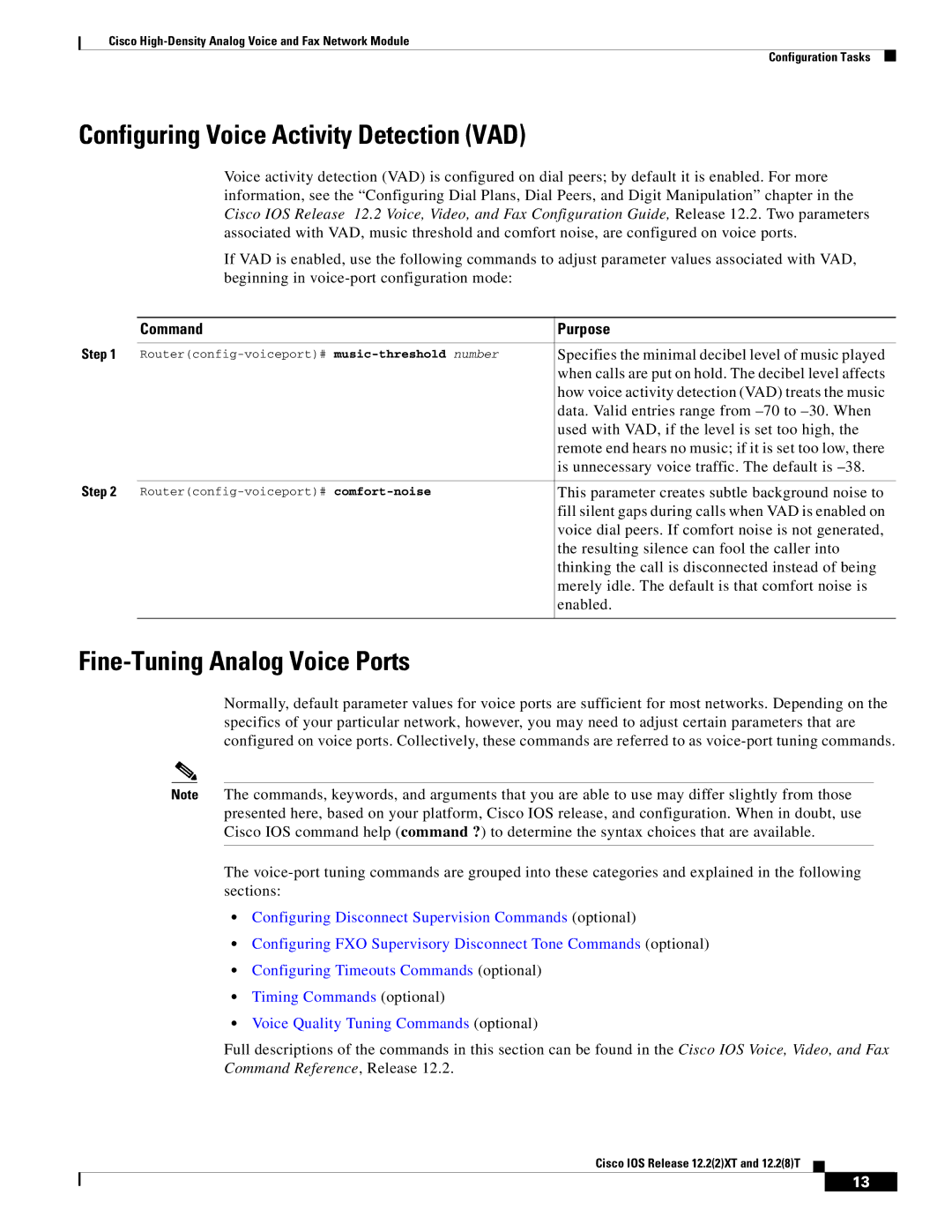
Cisco
Configuration Tasks
Configuring Voice Activity Detection (VAD)
Voice activity detection (VAD) is configured on dial peers; by default it is enabled. For more information, see the “Configuring Dial Plans, Dial Peers, and Digit Manipulation” chapter in the Cisco IOS Release 12.2 Voice, Video, and Fax Configuration Guide, Release 12.2. Two parameters associated with VAD, music threshold and comfort noise, are configured on voice ports.
If VAD is enabled, use the following commands to adjust parameter values associated with VAD, beginning in
| Command | Purpose |
Step 1 |
|
|
Specifies the minimal decibel level of music played | ||
|
| when calls are put on hold. The decibel level affects |
|
| how voice activity detection (VAD) treats the music |
|
| data. Valid entries range from |
|
| used with VAD, if the level is set too high, the |
|
| remote end hears no music; if it is set too low, there |
|
| is unnecessary voice traffic. The default is |
Step 2 |
|
|
This parameter creates subtle background noise to | ||
|
| fill silent gaps during calls when VAD is enabled on |
|
| voice dial peers. If comfort noise is not generated, |
|
| the resulting silence can fool the caller into |
|
| thinking the call is disconnected instead of being |
|
| merely idle. The default is that comfort noise is |
|
| enabled. |
|
|
|
Fine-Tuning Analog Voice Ports
Normally, default parameter values for voice ports are sufficient for most networks. Depending on the specifics of your particular network, however, you may need to adjust certain parameters that are configured on voice ports. Collectively, these commands are referred to as
Note The commands, keywords, and arguments that you are able to use may differ slightly from those presented here, based on your platform, Cisco IOS release, and configuration. When in doubt, use Cisco IOS command help (command ?) to determine the syntax choices that are available.
The
•Configuring Disconnect Supervision Commands (optional)
•Configuring FXO Supervisory Disconnect Tone Commands (optional)
•Configuring Timeouts Commands (optional)
•Timing Commands (optional)
•Voice Quality Tuning Commands (optional)
Full descriptions of the commands in this section can be found in the Cisco IOS Voice, Video, and Fax Command Reference, Release 12.2.
Cisco IOS Release 12.2(2)XT and 12.2(8)T
13
